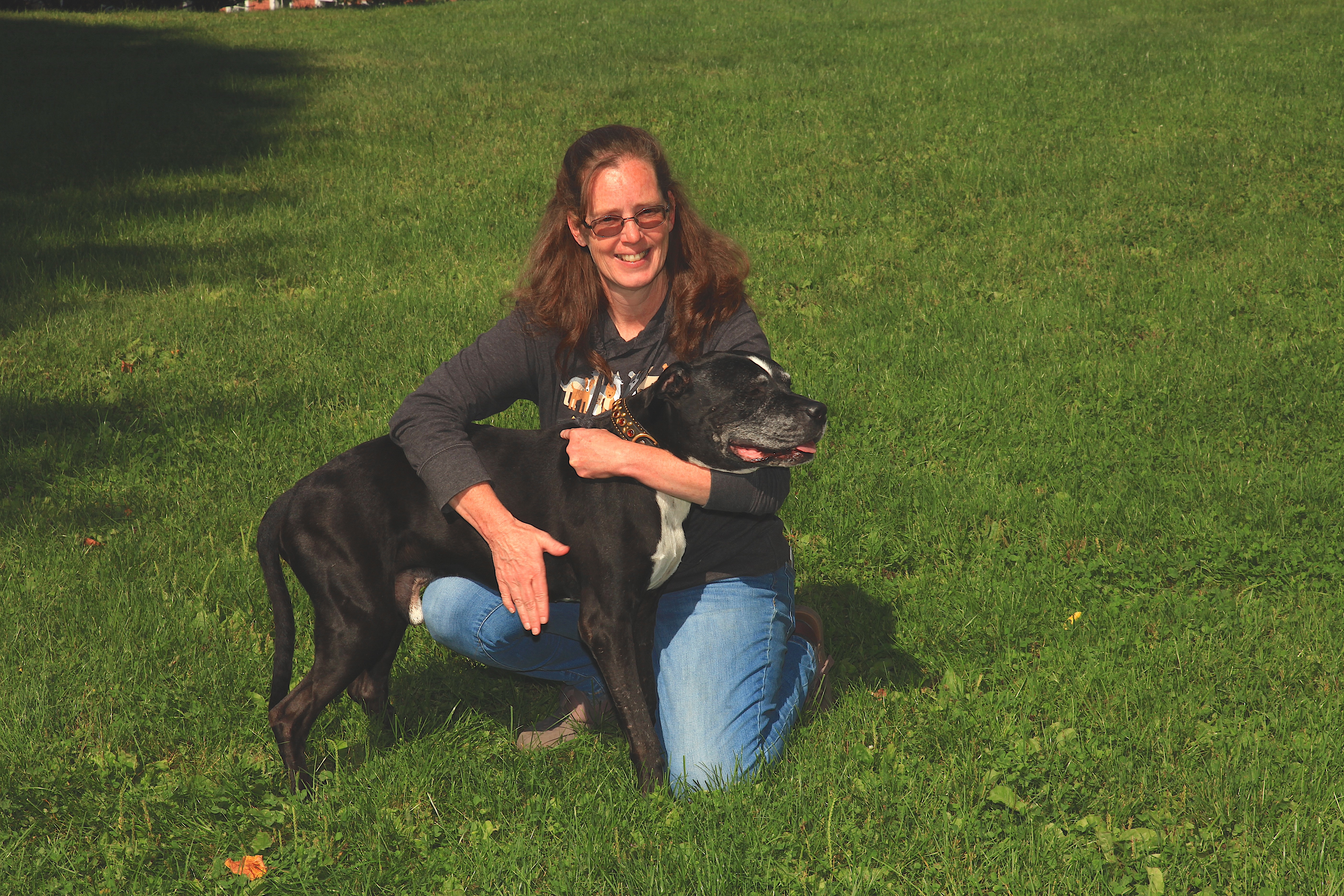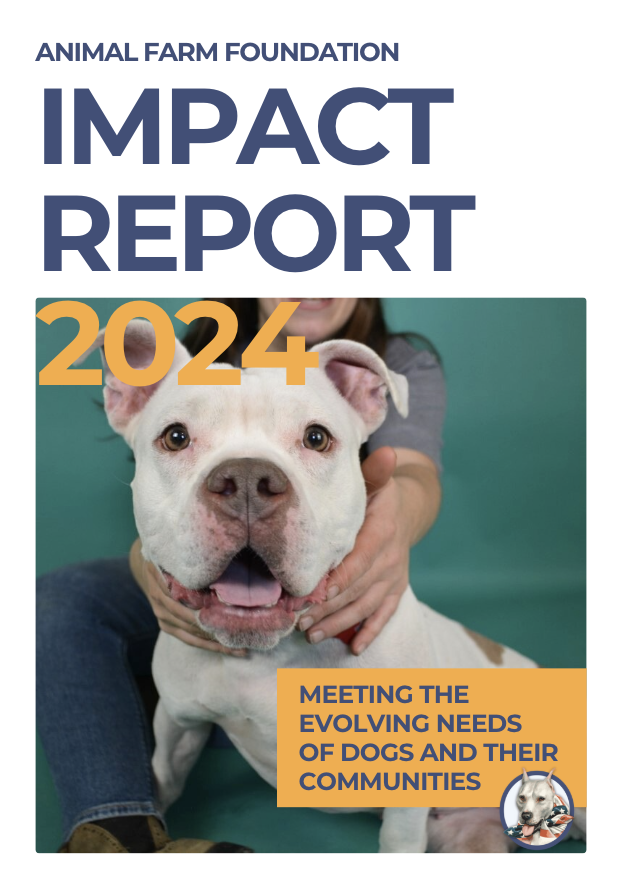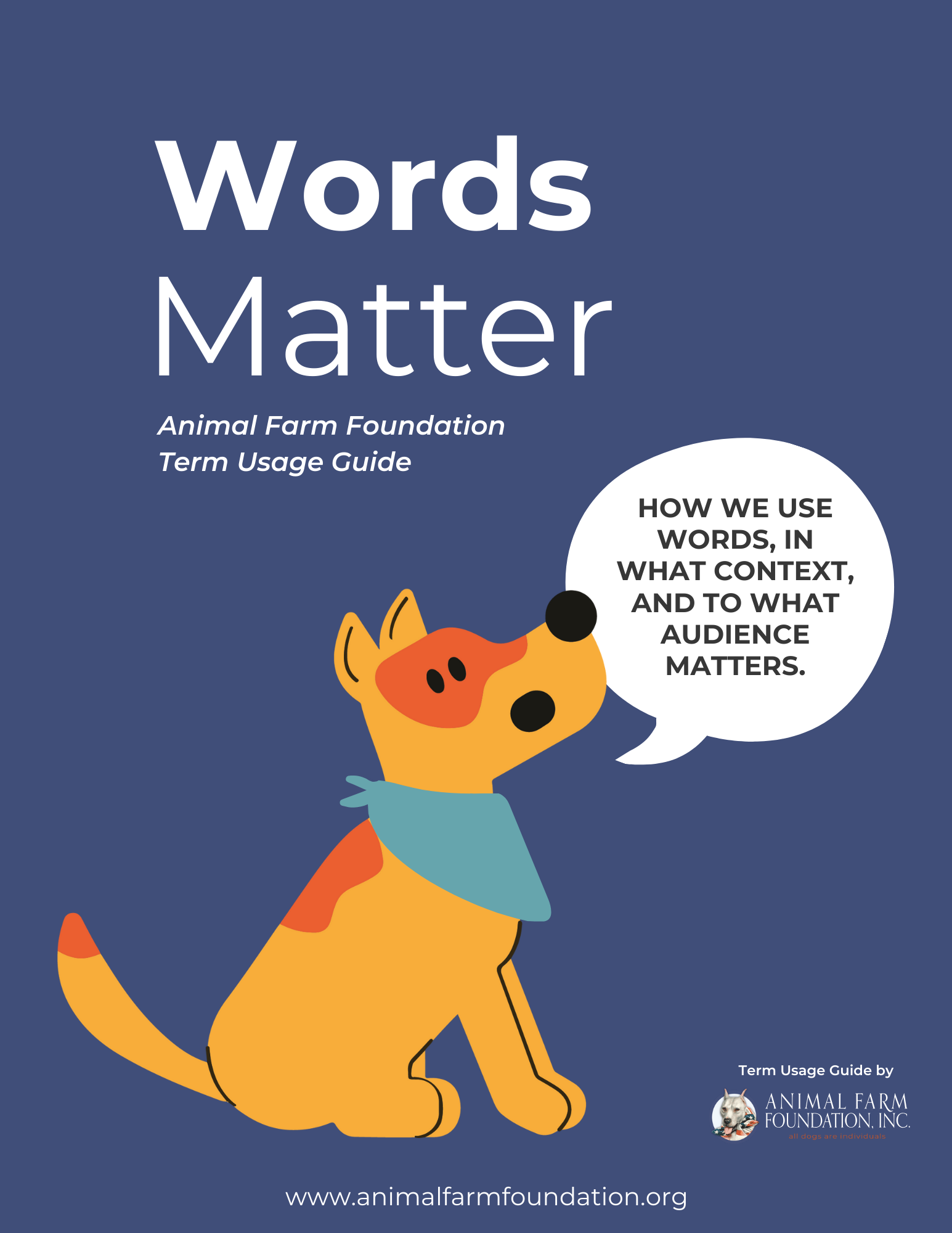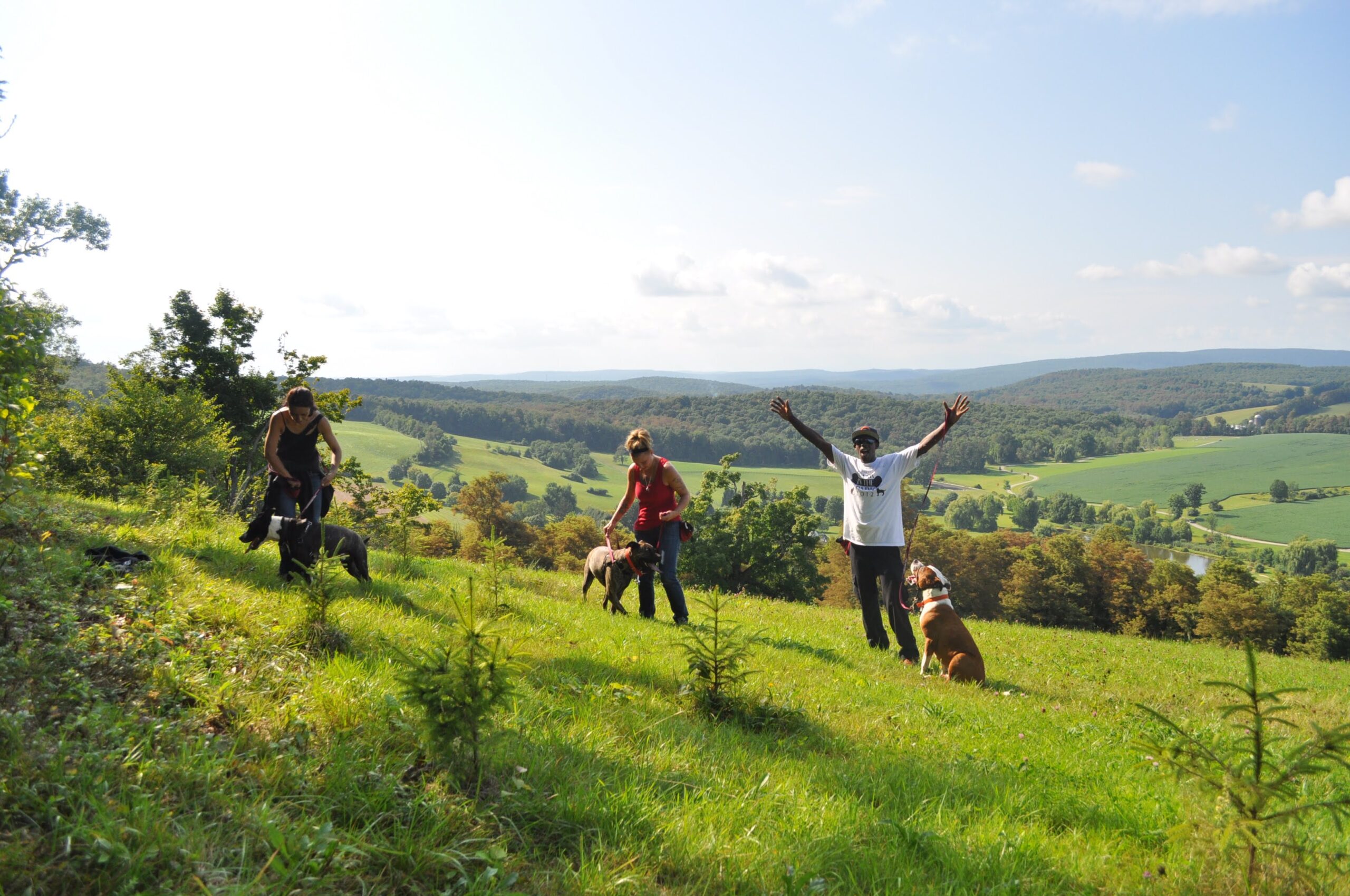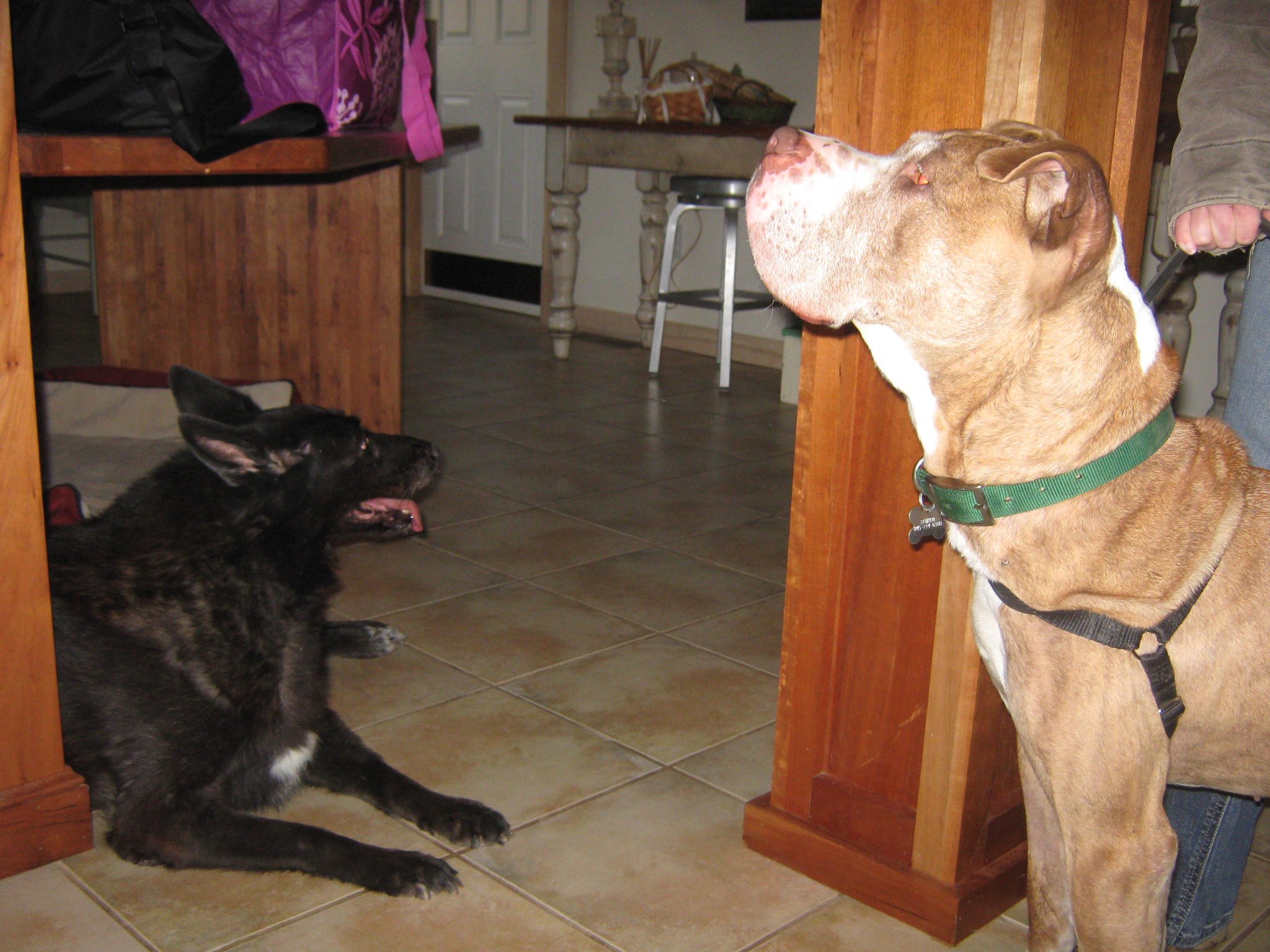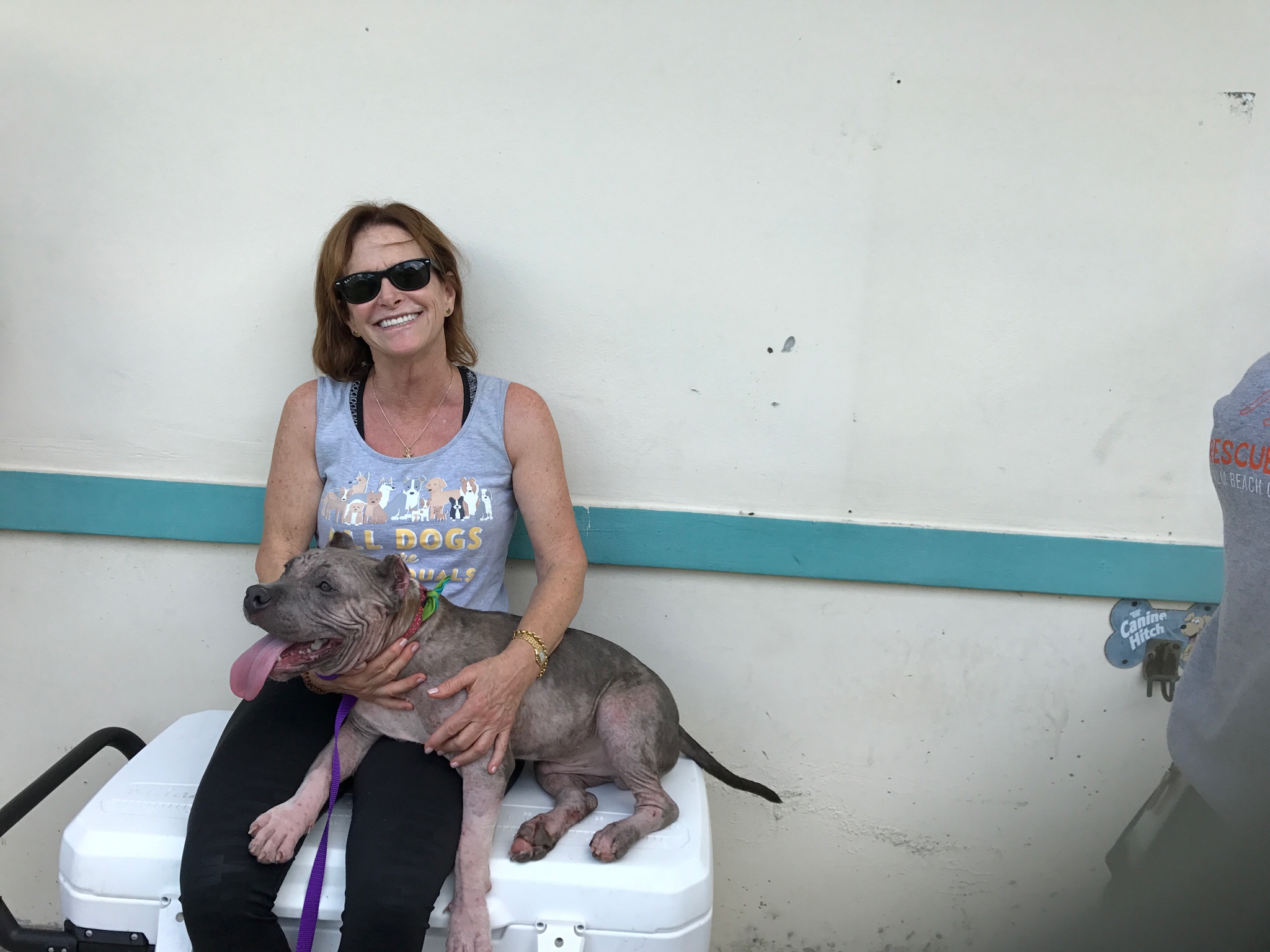This is a guest post from Kristen Auerbach, Deputy Chief Animal Services Officer at Austin Animal Center.
I’ve had the opportunity to travel to dozens of shelters around the country, and one of the most consistently troubling things I see is the common practice of severely restricting and prohibiting enrichment items, like toys and treats, in kennels. But, I think it’s time to loosen the reins on what we allow shelter dogs to have in their kennels.

Enrichment plays a critical role in lifesaving. It keeps dogs relaxed while they wait for their new homes, reducing kennel stress and associated behaviors that can become barriers to adoption in some shelters.
Most shelters know this, but some of them still aren’t embracing kennel enrichment.
This is because there’s a lot of fear about giving toys and objects to dogs. Shelters often cite diarrhea, ingested objects, and messes created by destroyed objects, as reasons not to provide kennel enrichment.

When I started working at Austin Animal Center about two years ago, dogs were only allowed to have pure liver treats and nothing else. This cost us about $15,000 per year and meant that life was awfully boring for our dogs.
Having seen the incredible impact enrichment can have in other shelters, we scrapped this rule. We immediately provided comprehensive, in-kennel enrichment to all of our dogs. This included Nylabones, treats of all kinds, stuffed Kongs, puzzle toys, antlers, raw beef bones, pig ears, cardboard treat-filled boxes, stuffed animals, tennis balls, bully sticks and more.
We often have 300 or more dogs at Austin Animal Center and they only spend a few minutes each day outside of their kennel. So, we’re committed to making life as fun as possible for them while they’re in their kennels.

We created a daily kennel enrichment schedule to make sure we were rotating the items to keep things exciting and we added treat bins to the front of all our kennels to encourage visitors to give dogs treats when they’re sitting quietly.
Since we started this program 18 months ago, we’ve seen a huge change in our dogs, staff, and volunteers. They are all so much happier!

That change has generated a ton of creativity. Our staff and volunteers keep coming up with new ideas for kennel enrichment. Not only that, we’ve found so many ways to recycle items we would otherwise discard. Today, we use egg cartons, cardboard boxes and other throwaway items as hiding places for toys and treats for dogs.

At Christmas, we filled boxes with enrichment items, wrapped them in paper and let volunteers hand out ‘presents’ to every dog. We had more than 200 people join us in making Christmas morning special for our dogs.
Today, we get lots of questions from other shelters about how we did it, so here are a couple of FAQs to help you get started providing enrichment in your shelter or rescue:
Doesn’t it cost a lot of money?
Quite the contrary! Our enrichment program is basically free. Everything is either donated through our Amazon wish list or donated by volunteer groups or community members. One of the best-kept secrets in animal welfare is that people love to donate toys and treats to shelter animals. It’s one of the easiest things to get if you just put the word out. We have a donation bin out front which gets completely filled with toys, treats, and dog food.

We select from those donations and choose high-quality food and treats for our treat bins. This program costs us almost nothing and we get tens of thousands of donated items every year. Check out the Kong Cares program to learn how your shelter can receive imperfect Kongs for a reduced price and even get free Kongs!
Is it safe?
Each organization has its own comfort level for what they feel they can safely give to their dogs. For example, we have certain guidelines about food and treats. We do not use treats made in China because there have been instances of them making dogs sick. We primarily use the high-quality donated food from our treat bins. Because the dogs are consuming small amounts of treats, we don’t see a big increase in diarrhea or sickness. We love bully sticks, training treats, hot dogs, as well as boiled chicken and grain free treats for dogs with sensitive stomachs.

When we started allowing some dogs to have stuffed toys in kennels, our staff was worried they would cause an increase in dogs ingesting objects and needing surgery. Just like everything else we do, we consider each dog individually. Some dogs find great comfort in snuggling next to a stuffed toy and for those dogs, stuffed toys are a key part of enrichment. Others just want to destroy soft toys, so for those dogs, we go with tougher items that can take wear and tear.

Overall, we’ve found our program to be extremely safe. Our dogs start off their mornings with walks or play groups, then eat breakfast, then have fun enrichment items delivered to their kennels in the afternoons. Our ultimate goal is to make the shelter like a summer camp, where dogs come to make new friends, learn some skills, play a lot and eventually go home with their new families!
Who cleans up the mess?
Once you get used to giving daily enrichment, removing items and cleaning them becomes part of the routine, just like cleaning food bowls. It’s much easier and faster than you might think and we’ve found volunteers are happy to assist with cleaning enrichment toys.

As far as preparing and distributing items, this is one of the easiest volunteer jobs and can be done by one-time groups, kids, teens and families. Consider allowing the public come to do an enrichment event and you’ll be amazed at how many people show up!
How do we get started?
Start by asking your community to donate treats, Nylabones and anything else you want to give your dogs. Come up with a schedule and hold a staff and volunteer meeting to talk about why you’re doing the program.

If you want to freeze enrichment items, you’ll need a freezer of some kind. We suggest animal shelters reach out to staff, volunteers, and to the public via social media to ask if anyone has a freezer they’re willing to donate. If not, you can easily raise money to purchase a freezer by using a crowdfunding app like gofundme.

Kennel enrichment programs are on their way to becoming a standard of care for all sheltered pets. Whether you want to start a full enrichment program or simply add a couple of new things to your existing enrichment regimen, the message is simple: Shelter dogs spend the vast majority of their time sitting in their kennels. Kennel enrichment is an easy, cheap way to keep our dogs happy, healthy and ready to meet their new families.

